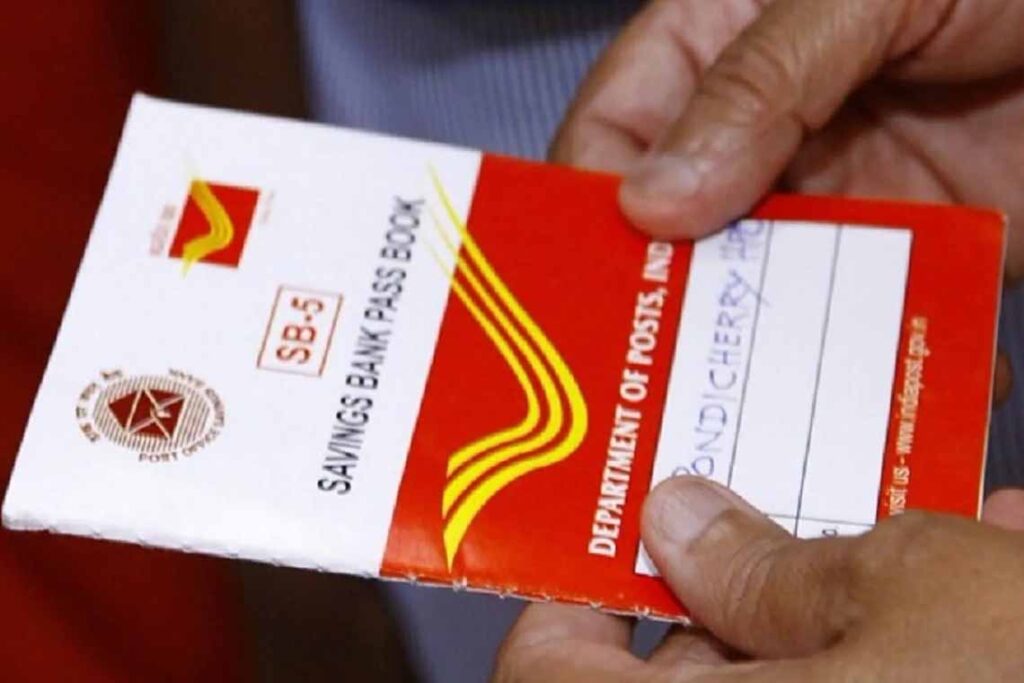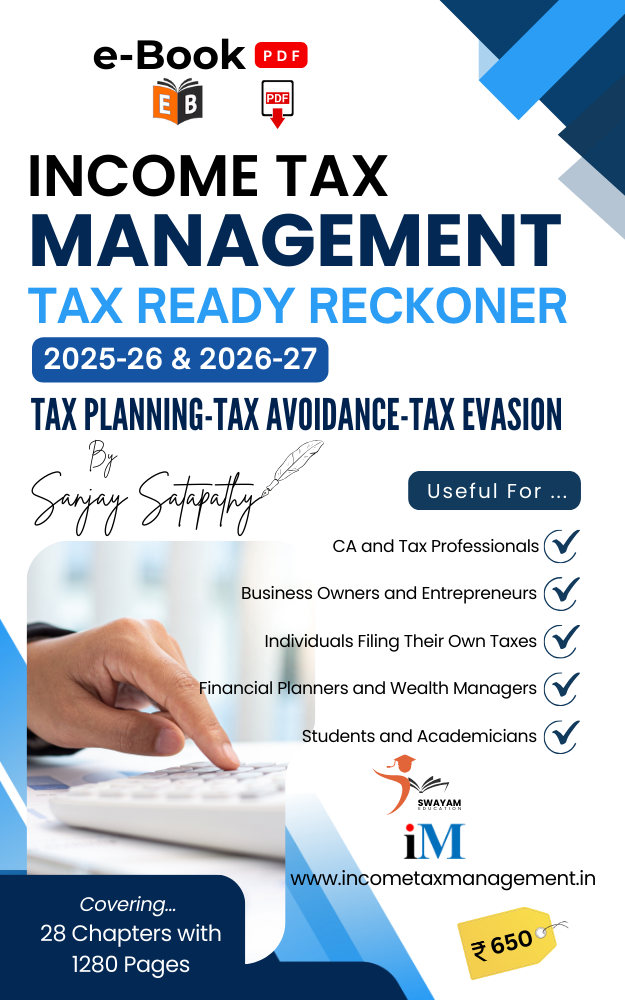Section 194-I of the Income Tax Act, 1961, a crucial piece of legislation in India, governs the taxation of income from rent. This section mandates that any person, baring certain exceptions which are herein later, who is responsible for paying rent, is required to deduct tax at source (TDS) at the time of credit of rent to the account of the payee or at the time of payment thereof in cash, cheque, draft or any other mode, whichever is earlier. The implications of this section are far-reaching, affecting a wide range of entities from businesses to landlords, and its understanding is essential for compliance with India’s tax laws.
Section 194-I of the Income Tax Act, 1961, State as under:
Any person, not being an individual or a Hindu Undivided Family, who is responsible for paying to (resident) any income by way of rent, shall, at the credit of such income to the account of the payee or at the time of payment thereof in cash or by the issue of cheque or draft or by any other mode, whichever is earlier, deduct income tax there on at the following rates:
| PARTICULARS | Rate of TDS |
| If the amount of rent paid does not exceed Rs. 2,40,000 on any machinery or plant or Equipment | 2% |
| If the amount of rent paid does not exceed Rs. 2,40,000 on land or building (including Factory building) or furniture or fittings | 10% |
If an individual or Hindu Undivided Family, whose total sales, gross receipts or turnover from the business or profession carried on by him exceeds, one crore rupees in case of business or fifty lakh rupees in case of profession, during the financial year immediately preceding the financial year in which such income by way of rent is credited or paid, shall be liable to deduct income tax under this section.
No deduction shall be made under this section where the income by way of rent is credited or paid to a business trust, being a real estate investment trust, in respect of any real estate, referred to in Section 10(23FCA), owned directly by such business trust.
Rent has been defined in Explanation to the Section 194-I as: Rent means any payment, by whatever named called, under any lease, tenancy or any other agreement or arrangement for the use of (either separately or together) any:
- Land; or
- Building (including factory building); or
- Land appurtenant to a building (including factory building); or
- Machinery; or
- Plant; or
- Equipment; or
- Furniture; or
- Fittings,
Whether or not any or all of the above are owned by the payee.
Provisions of Section 194I:
1. Applicability:
-
- TDS under Section 194I applies to payments made for rent.
- Rent includes payments for the use of:
- Land
- Building (including factory buildings, offices, etc.)
- Furniture
- Plant and machinery
- Equipment
- Any other land or building appurtenant thereto.
2. Threshold Limit for TDS:
-
- TDS is applicable only if the rent paid during the financial year exceeds:
- ₹2,40,000for individuals and HUFs.
- ₹2,40,000for other entities (companies, firms, etc.).
- TDS is applicable only if the rent paid during the financial year exceeds:
3. Rate of TDS:
-
- The rate of TDS depends on the payee’s status:
- 10%: If the payee is a resident individual, HUF, or any other resident entity.
- 2%: If the payee is a resident individual or HUF, and the rent is for the use of plant, machinery, or equipment.
- 20%: If the payee is a non-resident (as per Section 195).
- The rate of TDS depends on the payee’s status:
Note: If the payee does not provide a PAN (Permanent Account Number), TDS will be deducted at 20%.
4. Time of Deduction:
-
- TDS must be deducted at the time of credit of rentto the payee’s account or at the time of payment, whichever is earlier.
5. Exemptions:
-
- No TDS is required if the payer is an individual or HUFwhose books of accounts are not required to be audited under Section 44AB.
6. TDS Payment and Filing:
-
- The deductor must deposit the TDS amount to the government within the prescribed due dates.
- A TDS return (Form 26Q) must be filed quarterly, and a TDS certificate (Form 16A) must be issued to the payee.
7. Examples of Rent Payments Covered Under Section 194I:
-
- Rent for office space.
- Rent for factory premises.
- Rent for machinery or equipment.
- Rent for furniture.
- Rent for land or building.
8. Practical Example:
- Suppose a company pays ₹50,000 per month as rent for office space to a landlord. The total rent for the financial year is ₹6,00,000.
- Since the rent exceeds the threshold of ₹2,40,000, the company must deduct TDS at 10% (assuming the landlord is a resident individual).
- TDS per month = ₹50,000 × 10% = ₹5,000.
- The company will pay ₹45,000 to the landlord and deposit ₹5,000 as TDS to the government.
Taxability of Advance Rent-
The problem of giving credit for tax deducted at source on advance rent has been solved by the Central Board of Direct Taxes through a Circular No. 5 of 2001 dated 2 March, 2001.
There are various problems which are faced by the owners of the house property in getting due credit for Tax Deducted At Source under Section 199 of the Income tax Act, 1961 in respect of the tax deducted as per Section 194-I of the I.T. Act. The problems arise in respect of different situations.
- One common situation is relating to the receipt of advance rent for a period which is more than one financial year and which is to be adjusted against future rent.
- Likewise, a problem arises when income-tax is deducted at source on advance rent pertaining to one or more financial years and the rent agreement gets terminated or cancelled resulting into refund of balance amount of advance rent to the tenant, as to which is the year in which the credit for the tax deducted at source is to be given to the property owner. This is a baffling problem both for the property owners as well as for the Income-tax Department.
- Another situation arises where the house property, which has been let out, is transferred either by way of sale or by way of lease, or by way of gift with the tenant in occupation or otherwise. This normally results into the refund of the balance amount of advance rent to the transferee or to the tenant, as the case may be. Here the problem is that the time when the credit of tax deducted at source has to be granted to the house owner. Fortunately to all these problems have been discussed and analysed by the Central Board of Direct Taxes in its Circular No. 5 dated 2nd March, 2001. The Board has also given the necessary guidelines for giving credit in respect thereof, and which are given below:
The most common problem which arises in day-to-day transaction of letting out of the house property relate to the difficulty in getting the due credit for the tax deducted at source in one year, i.e. the year in which tax is deducted, because the entire amount of advance tax does not accrue to the assessee as taxable income in one financial year. This is because income from the property is taxed on the basis of annual letting value; whereas tax is deducted at source on the entire amount of advance rent pertaining to more than one financial year.
Hence, credit for entire amount of tax deducted at source is not allowed in terms of Section 199 of the IT Act because the credit is to be given for the assessment year for which such income is assessable. Thus, the assessees do not get credit for the entire amount of tax deducted at source in the first assessment year, in which part of the advance rent is offered as rental income, on the basis of the certificate furnished under Section 203 of the IT Act. Likewise, there is also a difficulty in claiming credit in the remaining assessment years to which the balance of advance rent relates in the absence of the certificate for tax deducted at source for those years. The Central Board of Direct Taxes has appreciated this problem and has issued instructions in the aforesaid circular to the effect where the advance rent is spread over more than one financial year and tax is deducted thereon, credit shall be allowed in the same proportion in which such income is offered for taxation for different assessment years based on the single certificate furnished for tax so deducted on the entire advance rent.
This credit will be given on the basis of the single certificate furnished for tax so deducted from the entire advance rent under Section 203 of the I.T. Act, read with Section 199. In this manner, the interest of the Income-tax Department will be served as no undue credit would be given to the house owner on the one hand and the house owner also will not suffer injustice as he will get due credit for tax deducted at source against the income-tax payable on the proportionate rent. There will not be any requirement for getting any other certificate for TDS as only one composite certificate for TDS would do, as per the Board’s clarification in the aforesaid Circular.
Where the rent agreement is terminated or cancelled resulting into refund of balance amount of advance rent to the tenant, the problem arises about the credit to be given for the TDS. Hence, the Central Board of Direct Taxes has given instructions that in such a situation the credit for the entire balance of tax deducted at source, which has not been given credit so far, would be allowed in the assessment year relevant to the financial year during which the rent agreement gets terminated or cancelled.
Another problem arises when the rental property is transferred by way of sale, lease, gift, etc. with tenant in occupation or otherwise. This would naturally result into refund of the balance amount of advance rent to the transferee or the tenant, as the case may be. In such a case also the C.B.D.T. has issued necessary instructions for solving the problem of granting credit for the entire balance of tax deducted at source which could not be given credit to the taxpayer so far. In such a situation, the C.B.D.T. has clarified that credit for the entire balance of tax deducted at source, which has not been given credit so far would be allowed in the assessment year relevant to the financial year during which the rented property is transferred and the balance of advance rent is refunded to the transferee or the tenant, as the case may be.
As per Section 197A, if any Person (other than Company or Firm) in receipt of Rent, can supply Form No 15G / 15H for No Deduction of Tax.
Form 15G and Form 15H are self-declaration forms used by individuals to state that their income is below the taxable limit, thereby requesting banks and other entities not to deduct tax at source (TDS). These forms are typically submitted by individuals to banks to prevent TDS on interest income, but they can also be used in the context of rental income.
In the case of rent, if a tenant is making rent payments to a landlord, the tenant may be required to deduct TDS under Section 194-I of the Income Tax Act. However, if the landlord’s total income is below the taxable limit, the landlord can submit Form 15G (for individuals below 60 years of age) or Form 15H (for individuals above 60 years of age) to the tenant. Upon receiving these forms, the tenant is not required to deduct TDS on the rent paid to the landlord.
It’s important to note that these forms are valid only for the specified financial year and must be submitted at the beginning of each financial year. Also, misuse of these forms (i.e., submitting these forms even when the income is above the taxable limit) can lead to penalties. Therefore, it’s crucial to understand the implications and proper usage of these forms.
| Points to Remember:
1. PAN of Payee: Ensure the payee provides their PAN; otherwise, TDS will be deducted at 20%. 2. No TDS for Small Rent Payments: If the rent does not exceed ₹2,40,000 in a financial year, no TDS is required. 3. TDS Certificate: Issue Form 16A to the payee after filing the TDS return. 4. Compliance: Non-compliance with TDS provisions may attract penalties and interest. Relevant Forms: · Form 26Q: Quarterly TDS return for rent payments. · Form 16A: TDS certificate issued to the payee. |












